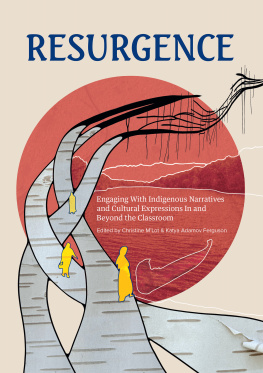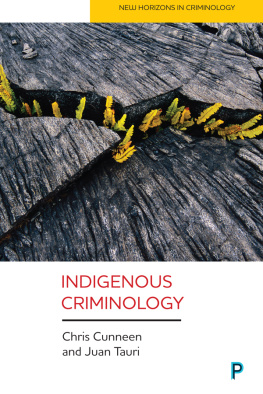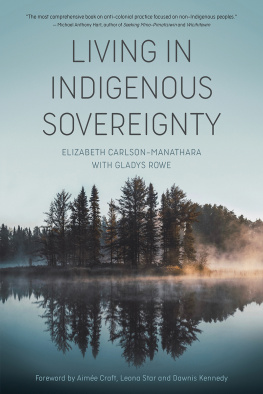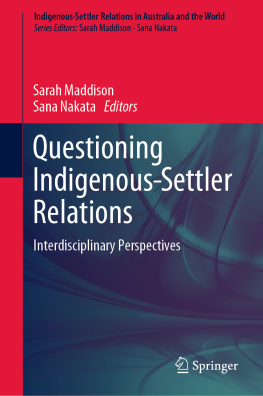Acknowledgments
First, wed like to thank all the contributors! Without your voices, this project wouldnt have been possible. We hope we have found ways to support educators in bringing your dynamic voices into discussions while maintaining the integrity of your stories. Wed also like to thank Portage & Main Press for the powerful opportunity to learn from the contributors and each other. Its been a pleasure and an honour to work alongside everyone who had a part in the creation of this book.
We want to acknowledge that the Footbridge Series was the idea of award-winning poet and writer Garry Thomas Morse (Kwakw a k a wakw), who introduced us to each other and invited us to join in this project. The construction of the footbridge began because of Garrys relationships and connections, and we thank him for initiating discussions with this phenomenal group of Indigenous contributors. We are grateful for his brilliant vision.
Christine: Id also like to thank my family, partner, friends, and especially my students, for inspiring me to keep learning so that I can be better for them.
Katya: Thank you to my family and learning communities, who have been so supportive. Thank you to Indigenous Elders who, despite the horrendous history, have generously guided and made space for settler teachers who want to learn from past mistakes. Thank you to Dr. Jeannie Kerr for your mentorship in learning through wholistic engagement with Dr. Jo-ann Archibalds storywork principles.
Beyond Being Silenced
Sara Florence Davidson (she/her/hers) is a Haida/settler assistant professor in the Faculty of Education at Simon Fraser University. Sara is the co-author of Potlatch as Pedagogy: Learning Through Ceremony , which she wrote with her father, Robert Davidson, along with the accompanying S k ada Stories series of childrens picture books focused on Indigenous pedagogies and intergenerational learning.
During the summer of the pandemic, my father finishes a totem pole. He names it Beyond Being Silenced . He explains that it is a continuation from the pole We Were Once Silenced that he carved several years ago. The first pole was a representation of his understanding of the role of colonialism in the oppression of Indigenous peoples. Specifically, it was an acknowledgment of the pain of the residential school Survivors, including his own father.
With the increased threat of COVID-19 , my fathers apprentices had returned home to their communities, leaving him safe, but also alone in his studio with no one to help him paint the pole. My father mentions this to me at lunch one day, putting it out to the universe. My father believes in the power of the universe to help those who are willing to take the first step. In years past, I had painted my brothers panels and my fathers canvases; I had never painted a pole. But in our family, we help one another. So, later, I text my father and offer to paint. He quickly accepts my offer.
The vibrancy of the paint brings the pole to life visually, but I can also feel the spirit of the tree continuing to emerge.
On a sunny day in June, I drive to my fathers studio to begin painting.
The carved pole lies still in the middle of the plywood floor. I am struck by the thought of the trees spirit still intact, but it is dormant so I can only catch glimpses of its light as I walk around the pole. Occasionally, I reach out to touch the carved faces. The smell of cedar wafts into the air and lingers in the creases of my palms.
My father provides me with black paint to start. I dip my brush in the container, slide it along the rim to remove excess paint, and then run it along the edges of eyebrows and wings and eventually tail feathers. I think about where my father learned to create these shapes that are older than he is. The knowledge of the Haida form has been passed on to my father from his father, grandfather, and the old Haida masters whose names were never recorded with their art. My father learned from studying the positive and negative spaces in their masterpieces in museums.
As I paint, I can feel the pole begin to awaken. I think back to the stories of the first pole that my father carved and raised in his home community in 1969. It was the first pole raising in almost a century, after the Indian Act was used to assimilate us and force us to stop living our culture. When my parents told me the stories of the Elders gathering to remember the songs and dances and the old way of raising a pole, I could sense the strength that emerged from these gatherings. In my fathers words, each Elder held a thread of knowledge, and when they came together it created a thick rope.
I wonder if they too felt a reawakening.
This pole is also the result of the strength that comes from people gathering. My father, my brother, other artists, and apprentices have all carved on this pole. There are even pencil lines that my youngest nephew made as he spent time in the studio watching his father and grandfather carve. Each artist has a skill, and when they came together, they created this pole that reflects all of their strengths. Each artist carries a thread that represents their own learning and connections to the past. This pole has provided an opportunity to bring that knowledge into the present.
My connection to the pole, and the tree it once was, deepens as I spend more time with it in my fathers studio. The vibrancy of the paint brings the pole to life visually, but I can also feel the spirit of the tree continuing to emerge. The frogs, grizzly, and eagles carved into the cedar have breathed new life into the tree. The Haida culture that has been carved into the grain has coaxed out the trees spirit, and now I can feel its energy beginning to radiate from the wood.
During the summer of the pandemic, my brother dies. His death forces me to question my role in keeping the knowledge alive. How can I ensure that what has been passed on to me from generations of ancestors will be passed on to future generations? How can I ensure their spirits will continue to live?
After my brother dies, my father talks to me about the pole. He says he carved the frog at the bottom right away because the frog is his spirit helper. Then he explains that the grizzly and the eagle share a mouth and their tongue speaks over the silence. Together, they draw on the strength of the eagle, who holds the power that we need to regain our voice.
The faces under the tongue remind us of the time that we were silenced. The reminder provides us with inspiration to continue on. At the top of the pole, the three watchmen help us to continue being strong. My father says that we need strength to maintain this new reality, and I cannot help but think of the new reality without my brother.
As I finish painting, I play the old recordings of the Elders singing when they gathered to prepare for the pole raising in 1969. I feel compelled to do this, as if the watchmen are demanding this connection to their past. But then I wonder if perhaps it is the echoes of those Elders from long ago who are calling out to mereminding me to listen for their guidance.
Either way, I am comforted by the songs.
During that summer, the pole teaches me how to move beyond being silenced. I learn that I must create support for my spirit, for the journey is challenging. I learn that I must find others who hold threads to help me to form a rope. And I learn that I must listen for the voices of my ancestors, because their knowledge ensured their survival and will help me to continue on as well.
From my brothers death, I learn that our spirit continues to live on even when it seems that we are gone.
It continues on through those we taught.
It continues on through those we inspired.
And it continues on through those we loved.
With gratitude to my parents for their contributions to this piece.











